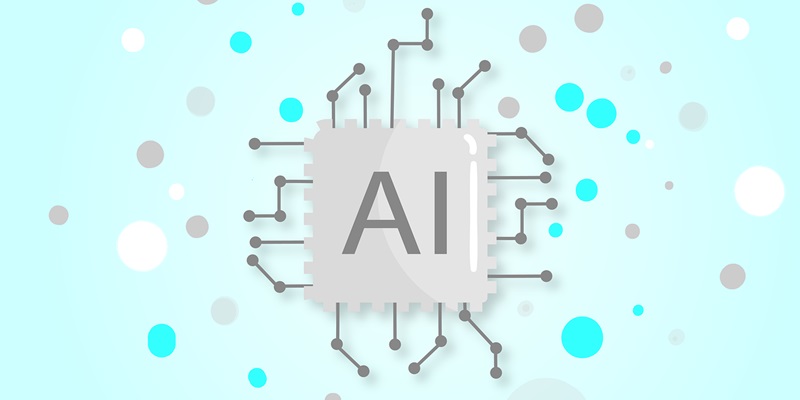In today’s rapidly evolving technological landscape, the adoption of artificial intelligence (AI) holds immense potential for businesses across industries. However, data leaders are facing significant hurdles in implementing AI within their organizations. This article delves into the issues surrounding AI adoption, particularly the low usage of AI, the lack of data literacy among employees, the absence of governance frameworks, and the impact these challenges have on successful implementation. Finally, strategies for overcoming these obstacles and promoting AI adoption are discussed, emphasizing the significance of data literacy, governance, and collaboration.
Limited AI Usage Among Employees
Data leaders are grappling with a concerning trend as 87% report that very few or no employees are utilizing AI in the workplace. This underutilization suggests hesitations or barriers preventing the effective implementation of AI technologies.
Basic Data Literacy Deficiency
A staggering 61% of data leaders express concerns regarding employees’ lack of fundamental data literacy skills necessary for using AI tools safely and compliantly. This scarcity of proficiency poses a challenge in leveraging the full potential of AI within organizations.
Inadequate Governance Frameworks
Among data leaders surveyed, 41% admit to having little or no governance framework in place while waiting for global AI regulations. This reluctance to act without clearly defined guidelines can impede progress and hinder the adoption of AI technologies.
The absence of a concrete governance framework reflects a wait-and-see approach, potentially stemming from uncertainties surrounding global AI regulations. However, this delay may restrict organizations from harnessing the benefits of AI amidst rapidly advancing technology.
Implications for AI Adoption
The lack of safety guidelines and organizational framework, combined with limited employee data literacy, can suffocate efforts to adopt AI effectively. Without clear procedures and understanding of AI implementation, businesses may struggle to navigate potential risks and maximize the innovation that AI offers.
Fear of Job Replacement and Insufficient Training
Employees, often fearing that their jobs may be replaced by AI, may be resistant to embracing the technology due to a lack of training and understanding. Addressing these concerns and providing adequate training are crucial to fostering acceptance and gaining employees’ trust in the transformative power of AI in the workplace.
Articulating Technical Needs to Non-Technical C-Suite
To promote successful AI implementation, CIOs and CDOs must effectively communicate the technical requirements and benefits of AI to non-technical members of the C-suite. This collaboration and understanding among executives facilitates decision-making and resource allocation for AI initiatives.
By fostering open dialogue and providing clear explanations of AI technology, non-technical executives can better support and contribute to AI implementation strategies. This collaboration ensures that business goals align with the technical capabilities and potential of AI.
Stalled Data Governance and AI Adoption
The report reveals an interesting finding: data governance has stalled just as AI adoption is gaining momentum across industries. The lack of progress in governance frameworks may hinder organizations from effectively managing and leveraging their data assets to support AI initiatives.
Challenges and Potential Solutions
Organizations must address the challenges faced in establishing efficient data governance frameworks. This involves developing comprehensive policies and procedures that ensure data quality, integrity, and security, while allowing for the implementation of AI technologies in a compliant and ethical manner.
Addressing AI-related Governance Issues
Approximately 40% of data leaders express concerns about governance, compliance, and the evolving regulations tied to AI. Organizations must actively address these concerns, develop appropriate policies, and maintain compliance with regulatory frameworks to foster trust and confidence in AI technologies.
By actively engaging with regulatory bodies, industry peers, and experts, organizations can proactively navigate the complex landscape of AI governance, compliance, and regulations. In doing so, they can establish a solid foundation that enables the ethical and responsible use of AI within their operations.
AI as a Catalyst for Creativity
When implemented effectively, AI should free up employees’ time and streamline mundane tasks, enabling them to focus on more creative endeavors. By automating repetitive processes, AI has the potential to unleash human creativity and drive innovation across various industries.
By harnessing the power of AI, organizations can optimize their operations, improve efficiencies, and generate valuable insights from vast amounts of data. This empowers employees to make data-driven decisions, improving productivity and driving innovative solutions to complex business challenges.
Identifying Suitable Use Cases for AI
Finding the right use cases for AI is a critical initial step in successful implementation. Organizations must assess their unique business needs, explore potential opportunities, and identify areas where AI can generate the most value, whether it’s in customer service, supply chain management, or predictive analytics.
Aligning AI Use Cases with Business Goals
To ensure effective integration of AI, organizations must align AI use cases with their broader business goals. By setting clear objectives and mapping AI applications to specific outcomes, businesses can achieve a more focused and impactful AI adoption strategy.
The adoption of AI holds immense promise, yet organizations face various challenges in fully embracing its potential. Addressing these hurdles involves prioritizing data literacy, establishing robust governance frameworks, ensuring compliance, and actively engaging with regulatory bodies. Moreover, effective communication between technical and non-technical executives and the identification of suitable use cases that align with business goals are essential. By overcoming these challenges and fostering a culture of collaboration and innovation, organizations can successfully integrate AI into their operations, unlocking its transformative power for increased productivity, creativity, and success.

